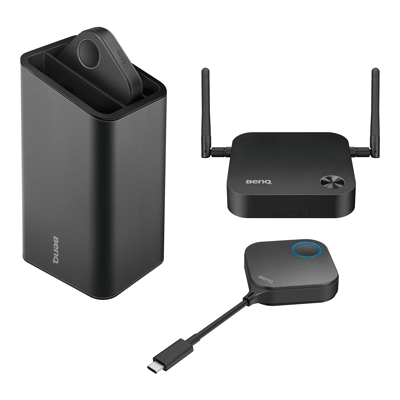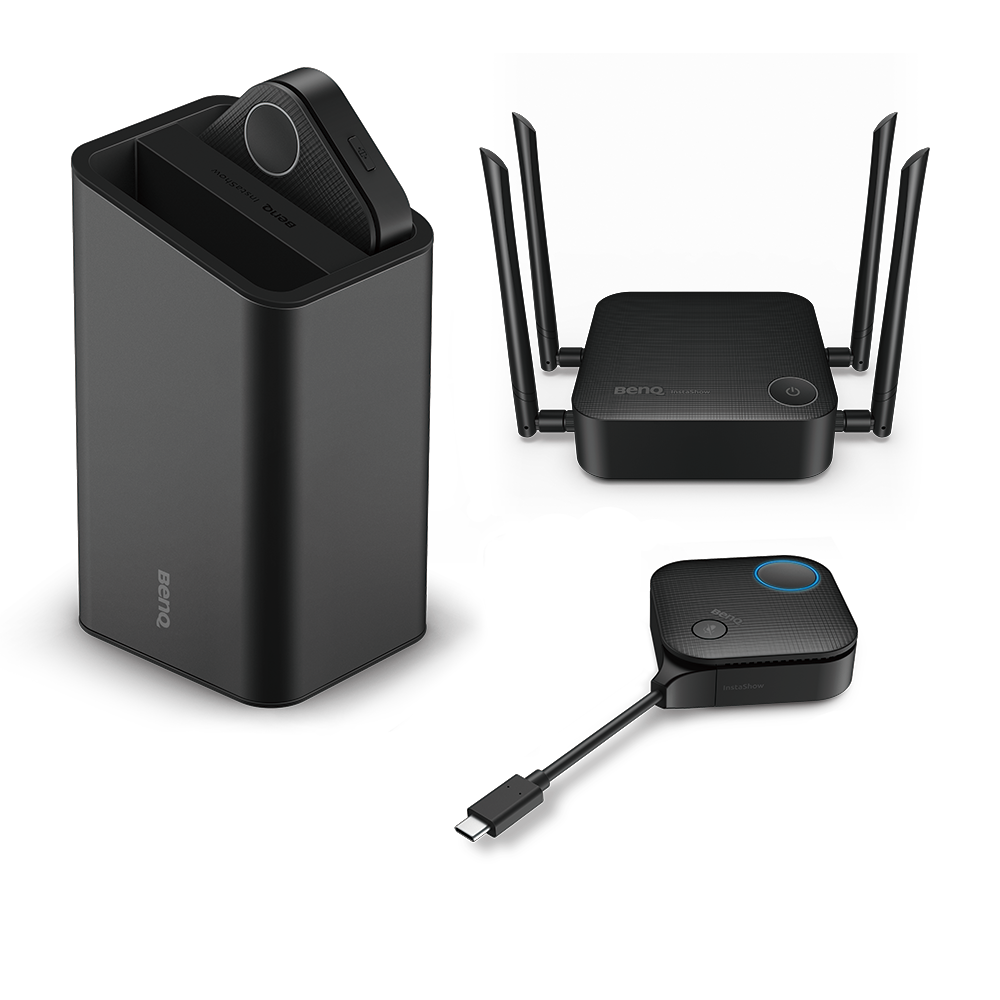What is a Wireless Presentation System?
- BenQ
- 2025-09-30

Wireless presentation system is a device that allows you to mirror your notebook or mobile device content on a shared projector, flat panel, or TV without a need to plug in a cable. Presenters can be switched at a click of a button and no precious time will be wasted. According to Gartner Research, wireless presentations systems are one of the top 10 strategic technologies to improve BYOD collaboration in office spaces.
Unlike consumer wireless dongles for screen mirroring, commercial wireless presentation systems are designed to improve collaboration during meetings and enable presenters to share ideas, concepts, and media without having to plug in a long cable. Because these are purpose-built for collaboration, a typical system will have these key elements:
- Multiple presenters – Wireless presentation systems allow you to easily switch presenters without any delays, and in some cases put multiple presenters on the screen at the same time.
- Content Encryption – Market leaders in this category encrypt the content so that people outside the meeting room cannot wirelessly “listen in” or record the presentation.
- Touch Back Support –It creates a wireless USB connection between an interactive touch display and the notebook to enable presenters to advance slides and create annotations on the screen that are captured by the notebook.
What wireless presentation methods are used the most?
Wireless presentation systems typically use one of three ways to wirelessly connect to the shared display.
Buttons
These are the most popular systems – and are very simple to use. To connect to the projector, you simply plug in a button or “puck” to your notebook or device and tap it to start presenting. The button encrypts the signal and wirelessly sends it to a receiver or “host” attached to the display. The Barco ClickShare and BenQ InstaShow are popular models that use this approach.
AV Control System / Video Conferencing Integration
Many traditional AV control systems and video conferencing systems offer wireless connections to their infrastructure to enable presenters to connect without a cable. Systems like the Crestron AirMedia can be integrated into existing HDMI switchers and control panels to leverage existing systems.
WiFi Hub System
These systems typically use a proprietary app to enable a notebook or other device to connect and present to the display using the corporate WiFi network and a receiver attached to the display. Systems such as the AirTame don’t require a button connected to the notebook but rely on the corporate WiFi network infrastructure to be robust enough to enable features such as smooth video frame rates.
According to Futuresource, wireless presentation systems that used buttons were the most popular approach, followed by those that integrated into AV control systems and WiFi Hubs.
What are the most popular brands?
The most popular brands of wireless presentation systems between $500 and $1000 are the Barco ClickShare, BenQ InstaShow, and Mersive Solstice according to Futuresource. Each of these solutions is used by major companies, have worldwide availability, and offer strong customer support infrastructures to ensure IT managers get the help they need – if they need it.

Security Protection for Sensitive Content and Network Access
Commercial-grade systems typically have detailed security white papers that outline how they protect sensitive content from being leaked outside the room, and guidelines on how they protect their devices from being used for unauthorized network access. The best wireless presentation systems have Common Vulnerability Scoring System (CVSS) certification that ensures that encrypted content cannot be broken or network connections compromised.
What types of devices can I connect to a wireless presentation system?
All popular wireless presentation systems can support Windows and MacBooks either using a button connection (BenQ InstaShow / Barco Clickshare) or using the company WiFi network. For mobile devices such as smartphones and tablets, you can either plug in a button or use an app running on the device.
Some systems also can connect to Chromebooks and other types of devices, such as Blu-ray players and digital cameras, where the buttons can take the HDMI content directly from the device and enable a wireless presentation without any extra software.
How much do they cost?
Most wireless presentation systems used in corporations are typically priced between $500 and $2,000 per room. In addition to the cost of the equipment, some presentation systems – such as those using WiFi networks – can require special network configurations and setup in order to perform properly. Some brands also require annual subscriptions for features such as security updates.
To compare different types of systems and calculate the total cost of ownership for your organization, learn more about how to apply the Gartner TCO model to wireless presentation systems.
Where can I learn more?
BenQ provides a Knowledge base that can answer many detailed questions you may have for your deployment, including how these systems can be used to improve social distancing in a meeting.




